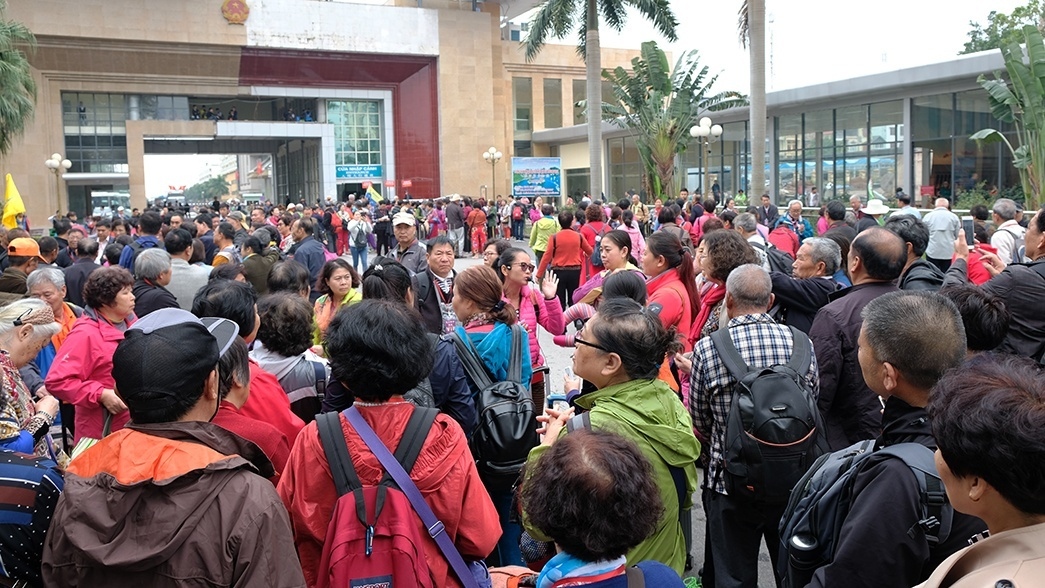Vietnam seeks to welcome back Chinese visitors
VOV.VN - The Vietnamese tourism industry has drawn up plans aimed at receiving Chinese travelers after the Chinese Government moved to ease COVID-19 restrictions and reopen its borders on January 8.

The Vietnam National Administration of Tourism (VNAT) has reported that China is Vietnam’s largest tourist market, with more than 5.8 million Chinese nationals visiting the country in 2019, making up one third of the total number of foreign travelers to Vietnam.
Nguyen Trung Khanh, general director of the VNAT, said the change in China’s COVID-19 policy starting from January 8 represents a positive signal for the Vietnamese tourism industry in the opening days of the year.
“With China easing COVID-19 restrictions, border gates and commercial flights between Vietnam and China have been resumed, bringing great opportunities for Vietnam’s tourism industry to attract visitors,” stressed Khanh.
After three years of combating the COVID-19 pandemic, foreign travelers, including those from China, have changed their habits, needs, preferences, as well as tastes, meaning that the Vietnamese tourism industry must make thorough preparations to welcome them back.
“It is necessary to improve tourism products to meet the needs of tourists, in addition to promotional activities, taking advantage of social networking platforms,” said Khanh.
At last week’s conference examining ways to welcome back Chinese visitors, representatives of numerous tour operators proposed that management agencies swiftly announce visa policies and simplify entry and exit procedures to create a healthy tourism environment and boost the country’s tourism image.
Cao Tri Dung, chairman of the Da Nang Tourism Association, suggested that the industry quickly restore the network of regular and charter flights from China to destinations such as Da Nang, Khanh Hoa, and Phu Quoc of Kien Giang province. At the same time, he said businesses should seek to deploy a communication campaign on social media channels and popular technology platforms in China, including Weibo, Tik Tok, WeChat, QQ, and Baidu.
“Vietnamese travel businesses must team up to create products for various segment of visitors. Besides, it is necessary to synchronously coordinate market promotion and communication targeting Chinese tourists to Vietnam,” said Dung.
Border gates between Vietnam and China were reopened on January 8 and tourism activities are expected to soon be resumed. In order to welcome this influx of visitors, management agencies and businesses must prepare plans to welcome back the return of Chinese tourists, according to experts.
“The health sector should have guidelines on how to prevent the XBB sub-variant of Omicron, thereby preventing the spread of the virus to tourists as well as Vietnamese people,” suggested Luong Duy Doanh, director of Fivestar Travel.
In the northern province of Quang Ninh that borders China, the number of Chinese nationals crossing the Mong Cai International Border Gate into the locality had skyrocketed before the COVID-19 pandemic broke out, climbing from 131,000 in 2014 to 750,000 in 2019. Chinese holidaymakers also made up half the total number of foreign travelers staying in Quang Ninh.
Now the Mong Cai municipal administration has developed plans to welcome back the return of Chinese holidaymakers.
“The city has directed localities and businesses to stay ready to welcome Chinese guests by preparing conditions, arranging equipment and upgrading accommodation facilities,” said Ho Quang Huy, chairman of the Mong Cai municipal administration.
The Vietnamese tourism industry has set a target of welcoming eight million foreign visitors in the year ahead. It is widely believed that this target is feasible due to China’s reopening from the beginning of this year and its status as the nation’s most significant international tourist market.
